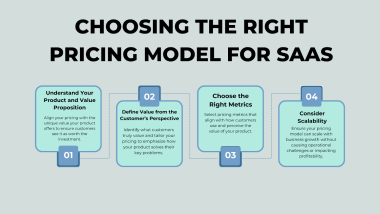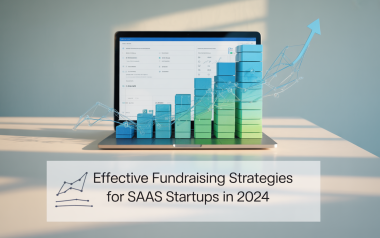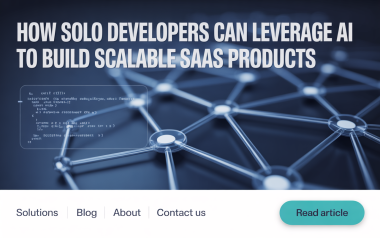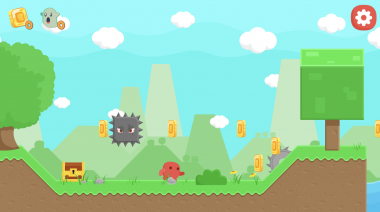Building a SaaS product as a solo developer presents unique challenges but offers incredible opportunities for those who approach it strategically. The journey from ideation to launch requires careful planning, efficient resource allocation, and a laser focus on solving genuine user problems—all while managing the technical, marketing, and business aspects single-handedly.
Key Takeaways:
- Validate your idea through market research and direct user feedback before investing significant development time
- Choose a focused tech stack that balances productivity with your existing skills to minimize learning curves
- Prioritize building a minimal viable product (MVP) with core features before expanding functionality
- Implement low-cost marketing strategies through community building and platform leveraging
- Plan for scalability from day one to prevent technical debt and costly rewrites as your user base grows
Finding Your Niche: The Foundation of SaaS Success
Identifying a specific, unaddressed problem in the market creates the foundation for a successful SaaS product. I’ve found that niches with passionate but underserved users offer the best opportunities for solo developers to make an impact without competing against well-funded teams.
Begin by researching your target audience thoroughly to understand their pain points and challenges. Create user personas and interview potential customers to validate your assumptions before writing a single line of code.
The validation process should include these essential steps:
- Conducting surveys and interviews with your target audience
- Creating mockups or prototypes to gather initial feedback
- Testing willingness to pay through pre-sales or landing page sign-ups
- Analyzing existing solutions and identifying their shortcomings
Choosing the Right Technology Stack
Selecting an appropriate tech stack dramatically impacts your development speed and future scalability. As a solo developer, prioritize technologies you’re comfortable with or can learn quickly over trendy but complex alternatives.
For the frontend, frameworks like React, Vue.js, or Angular provide robust ecosystems with ready-made components that accelerate development. The backend requires equal consideration, with Node.js, Django, or Ruby on Rails offering well-documented paths for building SaaS applications.
Your database selection should balance initial simplicity with room for growth:
- PostgreSQL offers reliability and advanced features for complex data models
- MongoDB provides flexibility for rapidly evolving schemas
- MySQL delivers solid performance with extensive community support
Hosting infrastructure like AWS, Google Cloud, or Heroku can start small and scale automatically as your user base grows. Many offer free tiers perfect for early-stage products.
Maximizing Development Efficiency
Time becomes your most precious resource when building solo. Leveraging third-party tools and services helps you focus on creating your core product rather than reinventing the wheel.
Modern development environments like Visual Studio Code or JetBrains tools offer productivity features that can save hours each week. Version control through Git keeps your codebase organized and allows for easy rollbacks when experiments don’t work out.
Consider these efficiency boosters for solo development:
- CI/CD pipelines through GitHub Actions or similar tools to automate testing and deployment
- Pre-built authentication systems like Auth0 or Firebase Authentication
- Payment processing through Stripe or similar services instead of custom implementations
- Error monitoring with Sentry to catch issues before users report them
Building Your Minimum Viable Product
Creating a focused MVP prevents the common trap of perfectionism that delays many solo projects indefinitely. Identify the core 20% of features that solve 80% of your users’ problems and build only those initially.
Your MVP should demonstrate your unique value proposition while being simple enough to build in weeks rather than months. Skip nice-to-have features entirely until you’ve validated market fit with real users.
The feature prioritization process should include:
- Categorizing features as “must-have,” “should-have,” or “could-have”
- Estimating development time realistically for each feature
- Setting clear milestones with deadlines to maintain momentum
- Planning regular release cycles to gather user feedback
Marketing Strategies on a Shoestring Budget
Effective marketing doesn’t require a massive budget—it requires creativity and consistency. Building in public through social media, tech forums, and communities like Indie Hackers creates awareness before your product launches.
Content marketing provides long-term value by addressing your target audience’s problems and positioning your solution. Write articles that demonstrate your expertise and subtly highlight how your product solves common challenges.
Consider these low-cost marketing channels:
- Product Hunt launches to generate initial buzz
- SEO optimization to attract organic search traffic
- Regular engagement in relevant online communities
- Email newsletters to nurture leads and announce updates
- Strategic partnerships with complementary services
Gaining and Retaining Customers
Direct user engagement gives solo developers a competitive advantage against larger companies. Set up simple feedback channels through tools like Intercom or even a dedicated email address to collect user insights.
Implement a system for tracking feature requests and prioritize improvements that address common pain points. Quick response times and personal attention create loyal customers who become ambassadors for your product.
Effective customer validation requires:
- Regular user interviews to understand evolving needs
- Usage analytics to identify bottlenecks and opportunities
- A simple but comprehensive onboarding process
- Transparent communication about roadmap and updates
Planning for Growth and Scaling
Designing for future scalability prevents painful rewrites as your user base grows. Infrastructure choices should anticipate success rather than optimizing solely for current needs.
Non-functional requirements like performance, security, and reliability deserve attention from day one. Small architectural decisions made early can have outsized impacts when you reach hundreds or thousands of users.
Key scaling considerations include:
- Database indexing and query optimization
- Asset caching and content delivery networks
- Autoscaling infrastructure configuration
- Regular security audits and updates
Building a SaaS product as a solo developer presents unique challenges, but with strategic planning and resource allocation, it’s entirely achievable. Focus on solving real problems, validate early, and grow methodically to create a sustainable business that can thrive without requiring a large team.
Sources:
Soft Suave – Can a Solo Developer Build a SaaS App?
Dev.to – Can a Solo Developer Build a SaaS App?
Five.co – Can a Solo Developer Create a SaaS App?






